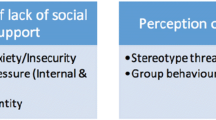Abstract
A “Shikake” is an embodied trigger for the person to lead a behavioral change. We can say methods of creation are combinations of Shikakes, designed to encourage participants to find issues and create solutions. Innovators market game is a method for creating new ideas by combining existent ideas. We propose a new method for creating ideas, Role-based Innovators Market Game. In the game, players take part in the role selected from the real world, e.g., journalists, government, and doctors. Players create ideas based on their own roles through communications with other players. The rules, acting roles, and communication make players more creative and imaginative. Players can discover and solve practical problems, and improve their creative and imaginative skills through this activity. The result suggests that combining low relative information may be high evaluated in the situation of creating ideas. The low relative information is calculated by the algorithm Relativeness. In this study, we design Role-based Innovators Market Game and show the functions and the relations of factors worked as Shikake, and propose the evaluation method of ideas, Relativeness.






Similar content being viewed by others
References
CRDS, Japan Science and Technology Agency (2011) A report of the workshop to encounter societal theme and R&D discipline (FY2011). CRDS-FY2-11-WR-10 (a governmental document in Japanese)
Cropley A (1967) Creativity. Longmans, London
Deterding S, Dixon D, Khaled R, Nacke L (2011) From game design elements to gamefulness: defining “gamification”. In: Proceedings of the MindTrek’11, Tampere, Finland
Finke RA, Ward TB, Smith SM (1996) Creative cognition: theory, research, and applications. A Bradford book
Gordon WJ (1961) Synectics: the development of creative capacity. New York
Granovetter M (1973) The strength of weak ties. Am J Soc 78(6):1360–1380
Hayashi T, Ohsawa Y. (2012) Processing combinatorial thinking: innovators marketplace as role-based game plus action planning. In: 20th European conference on artificial intelligence, 1st European workshop on chance discovery and data synthesis in ECAI 2012
Hohmann L (2007) Innovation games: creating breakthrough products through collaborative play. Addison-Wesley, Boston, pp 47–124
Kawakita J (1967) Hasso-hou (the method of creating ideas). Chuokoron-Sha
Matsumura N (2013) A Shikake as an embodied trigger for behavior change. AAAI Press Technical Report, SS-13-06, pp 62–67
Matsumura N, Fruchter R (2013) Shikake trigger categories. AAAI Press Technical Report, SS-13-06, pp 68–73
Ohsawa Y, McBurney P (2003) Chance discovery. Springer, Berlin
Ohsawa Y, Nishihara Y (2010) Innovators marketplace: process of innovative communication applied for policy marking on atomic plant aging. In: Proceedings international symposium on the ageing management & maintenance of nuclear power plants (ISaG 2010), pp 3–16
Ohsawa Y, Nishihara Y (2012) Innovators’ marketplace: using games to activate and train innovators. Springer, Berlin
Ohsawa Y, Benson NE, Yachida M (1998) KeyGraph: automatic indexing by co-occurrence graph based on building construction metaphor. In: Proceedings advanced digital library conference (IEEE ADL’98), pp 12–18
Osborn AF (1979) Applied imagination: principles and procedures of creative problem solving. Charles Scribner’s Sons, New York
Takahashi M (2002) The Bible of creativity (Souzou-ryoku Jiten) (in Japanese). Nikkagiren
Takahashi T, Nishihara Y, Takaichi A, Ohsawa Y (2009) Innovation created by analogical thinking and sympathetic communication. Research Institute of Japanese Auto Parts Industries, WASEDA University
Acknowledgments
This study was supported by JST, CREST. We would like to show our greatest appreciation to staff members of KKE (Kozo Keikaku Engineering Inc.) for supporting our study.
Author information
Authors and Affiliations
Corresponding author
Rights and permissions
About this article
Cite this article
Hayashi, T., Ohsawa, Y. Shikakeological approach of innovators marketplace as role-based game and evaluation method for solutions. AI & Soc 30, 451–461 (2015). https://doi.org/10.1007/s00146-014-0561-8
Received:
Accepted:
Published:
Issue Date:
DOI: https://doi.org/10.1007/s00146-014-0561-8




